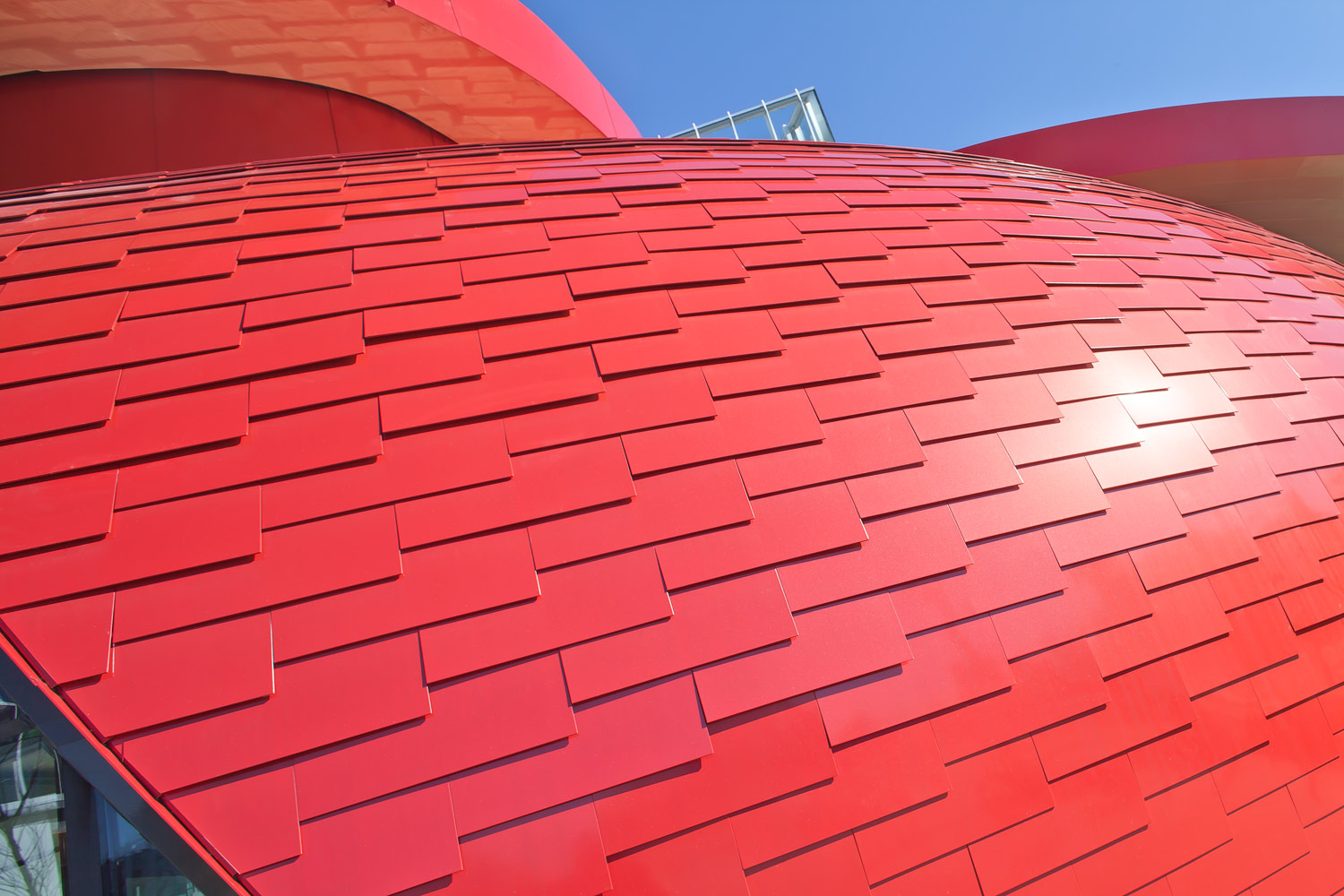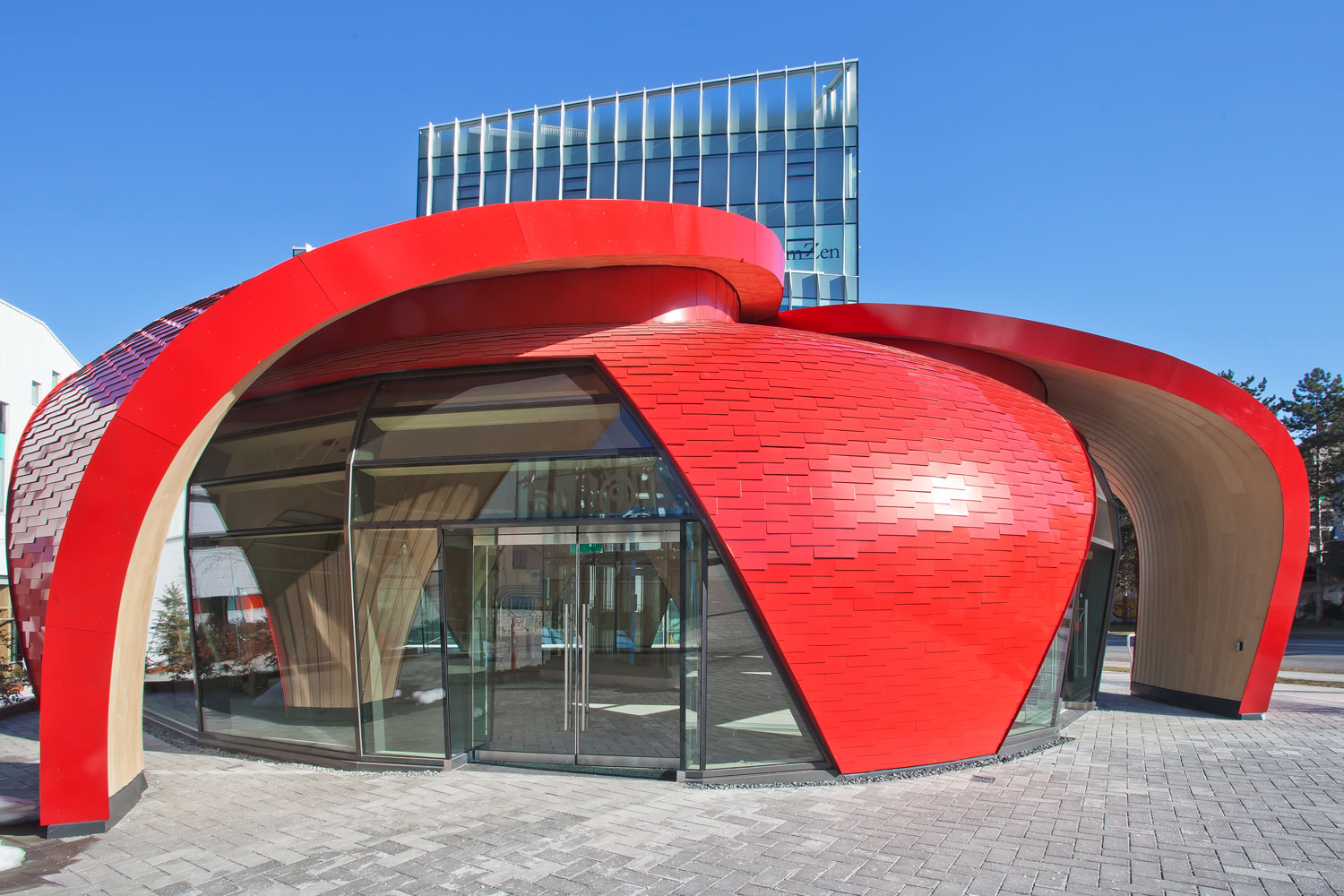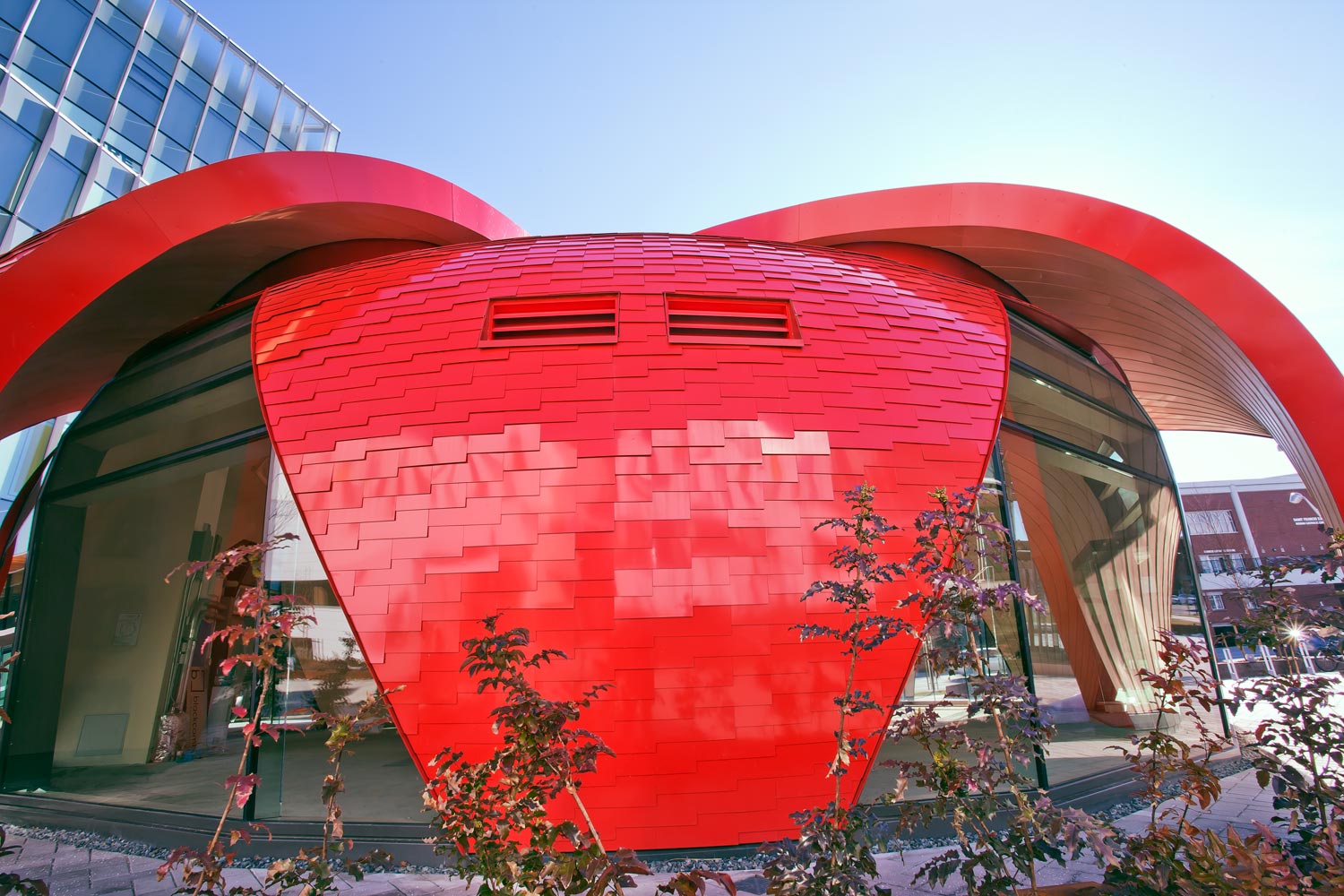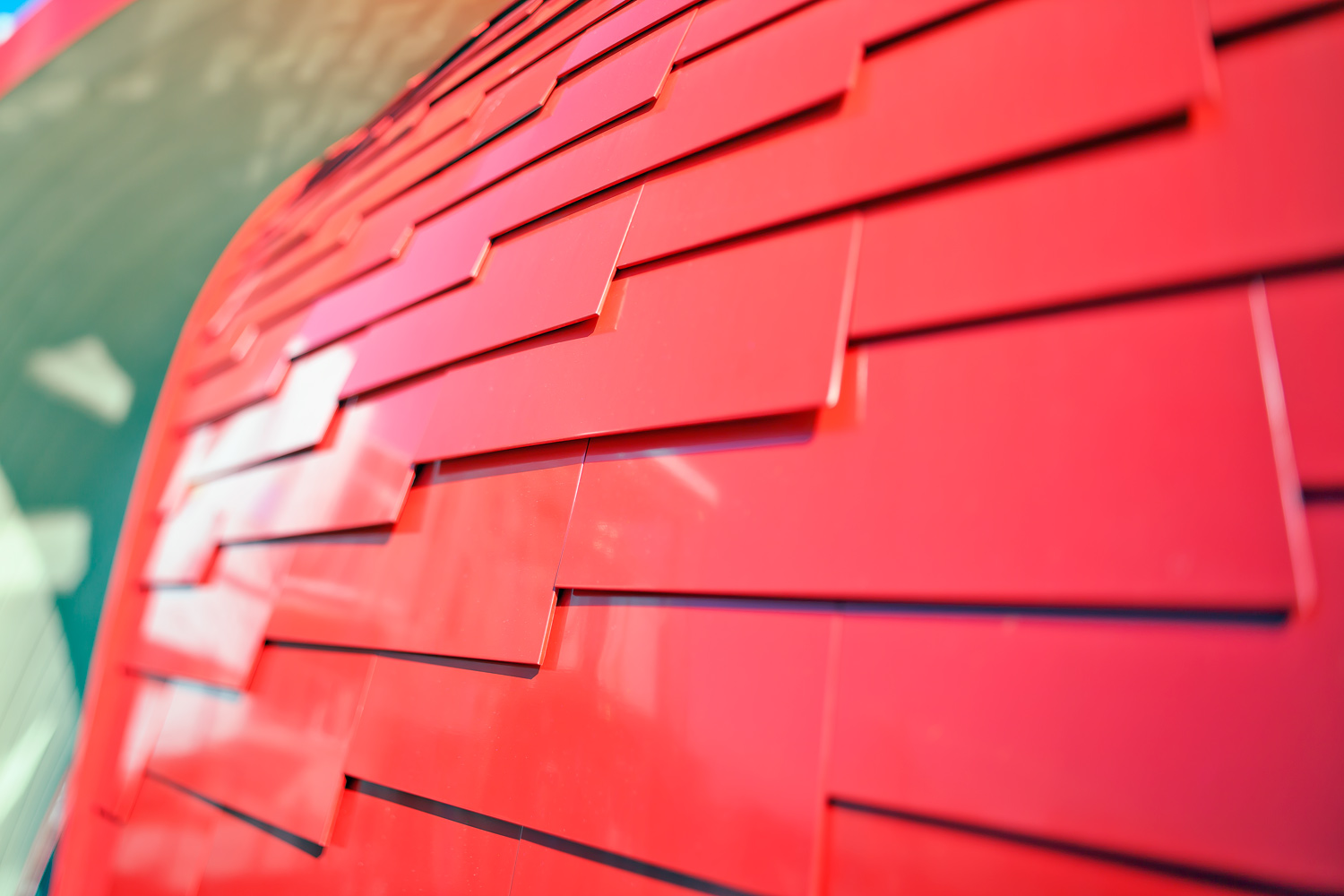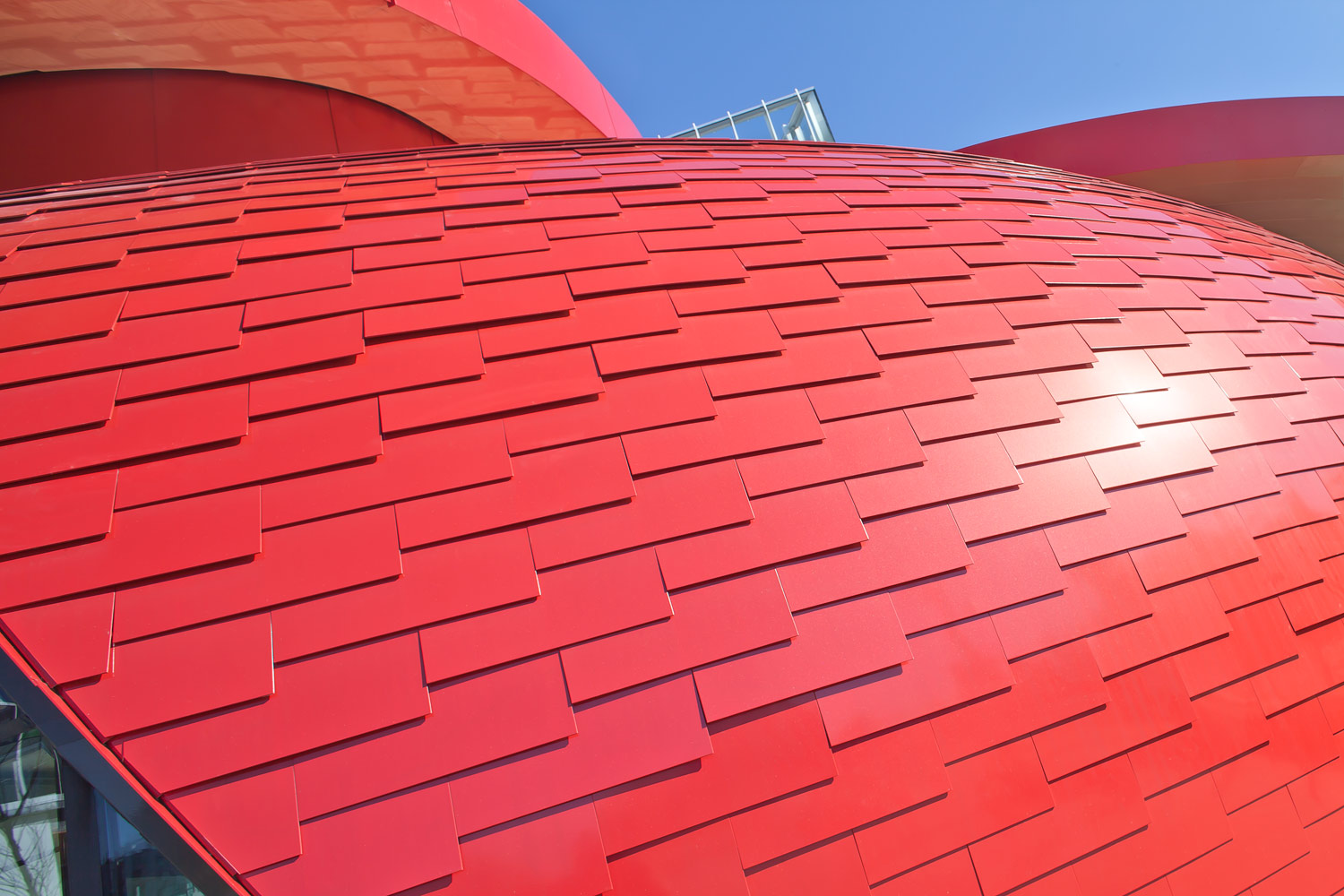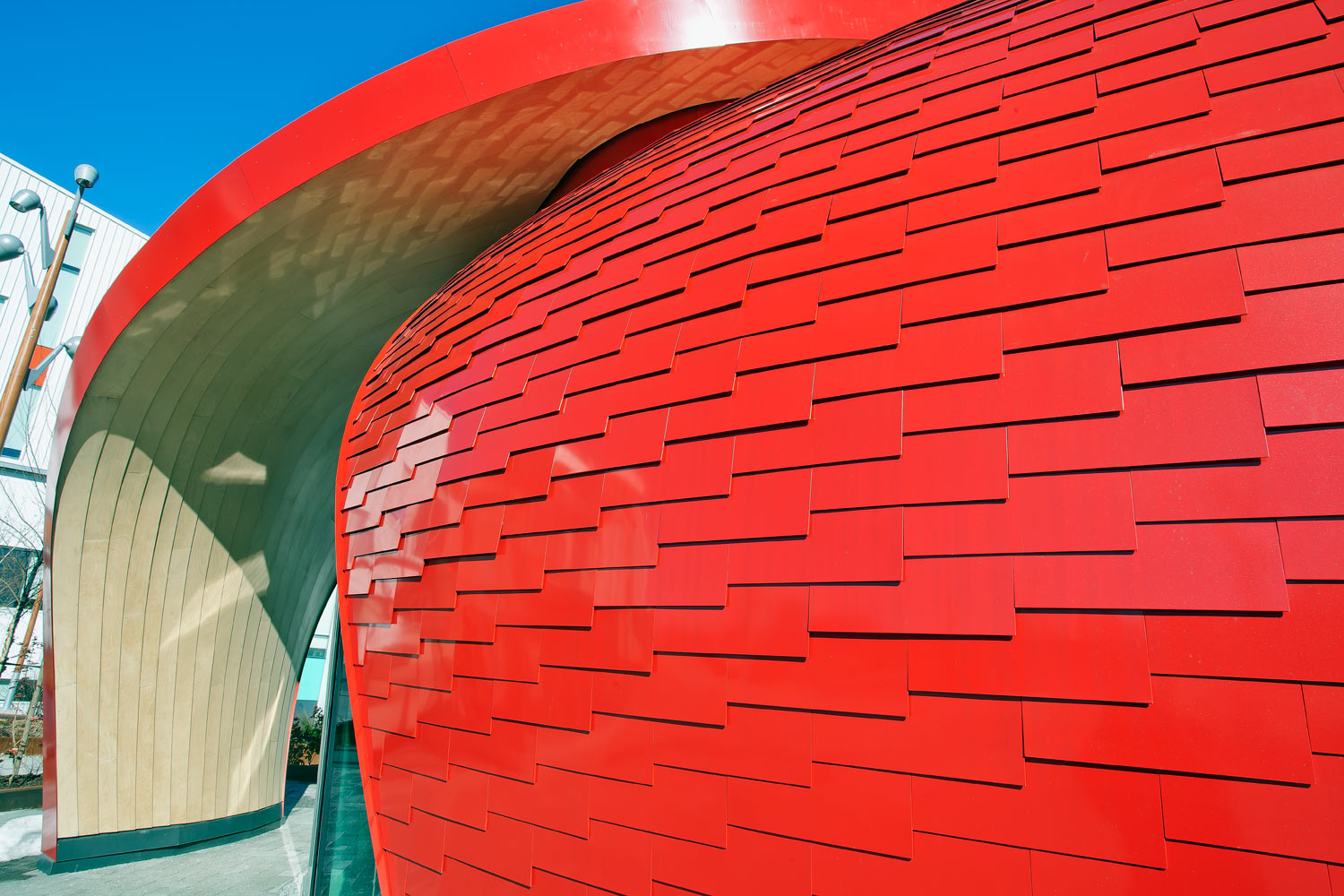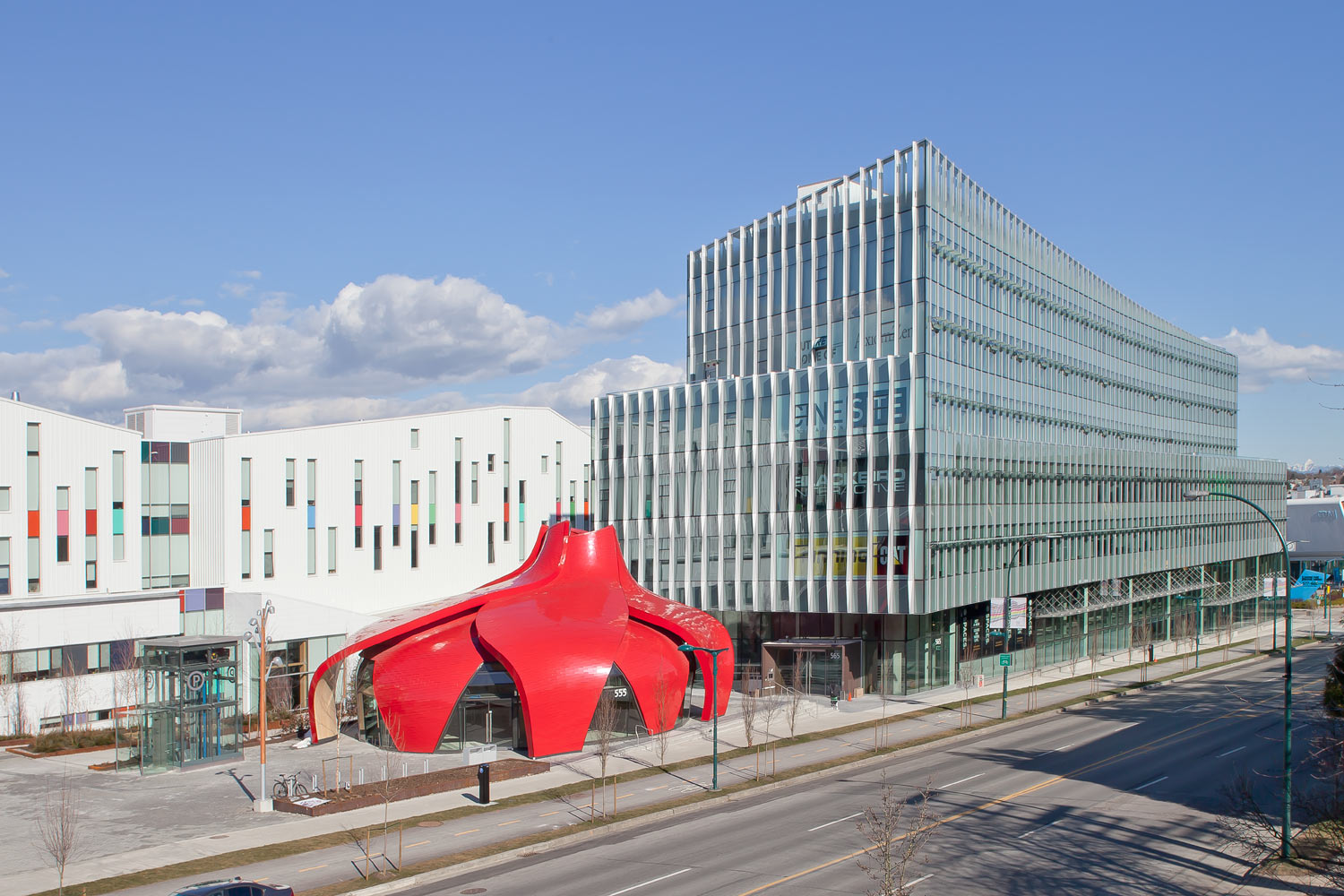
There’s a shimmering red-hued petal-shaped retail pavilion readying to open on Great Northern Way in Vancouver, British Columbia, that’s been designed to attract customers just like pollinating bees are drawn to flowers.
Highlights
• The retail pavilion’s first tenant will be a Nemesis Coffee shop.
• Targeted to achieve LEED Gold certification, Perkins and Will chose to construct the pavilion with environmentally friendly materials, including formed timber, steel and ALUCOBOND PLUS ACM
• Perkins and Will designed the retail pavilion with Rhino Grasshopper and Autodesk Revit modeling software. To prove the complex design’s structural engineering was achievable, Madkour traveled to the Autodesk Technology Center at its BUILD Space in Boston to create a prototype of curved nail laminated timber (NLT)
Project: “Red Petal” Retail Pavilion
Location: Vancouver, British Columbia
ALUCOBOND® PLUS:
Custom Rosy Starburst from The Spectra Collection
Architect: Perkins and Will Canada Inc.
Fabricator/Installer: Keith Panel Systems
General Contractor: Ledcor Group of Companies
Photography © Robert Stefanowicz
The Project
“It is a visible attractor to the community,” according to Yehia Madkour, Architect AIBC, director of innovation, Perkins and Will, who said the owners wanted to provide a gathering place for university students as well as employees of media companies that have opened offices in this former industrial area that recently has been transformed into a “hub for creativity” in the city.

The retail pavilion’s first tenant will be a Nemesis Coffee shop.
“We wanted to create an expressive structure and were inspired by flowers,” said Madkour. “Flowers attract bees. We wanted to cause people to pause and stop. This pavilion is designed to get people inside. We looked at how flowers grow and how their petals overlap. We went through many iterations of this design to arrive at its final shape.”
Targeted to achieve LEED Gold certification, Perkins and Will chose to construct the pavilion with environmentally friendly materials, including formed timber, steel and ALUCOBOND PLUS ACM. Recyclable ALUCOBOND PLUS – which is manufactured with both post-manufacturing and post-consumer content – contributes LEED credits to building projects.
(As the original “aluminum composite material,” ALUCOBOND PLUS has been developed exclusively to allow architects and designers to meet the fire performance requirements of today’s building standards while using ACM as the material of choice. Consisting of two sheets of smooth .020” aluminum thermo-bonded to a solid, fire retardant core, ALUCOBOND PLUS offers the proven product properties such as flatness, form-ability, durability and ease of fabrication. ALUCOBOND PLUS is manufactured in a standard 4mm thickness. ALUCOBOND PLUS Spectra colors are transitional finishes which celebrate the natural color shifts that occur in materials that affect everyday life; the subtle nuances and color contrasts found readily in nature, the glowing luster and sheen in modern metals and the color shifts found in today’s luxury goods.)
Design
With the flower petal design agreed upon, building owners became involved in selecting the pavilion’s color scheme. “We explored white, gray and silver,” said Madkour. “Then we explored yellow and red, which we knew would create a visible landmark in the city. The ALUCOBOND PLUS in color-shifting Spectra helped to define the pavilion’s curvilinear lines and offered depth within the shingles. We tried many color variations and reviewed many ALUCOBOND PLUS color samples before deciding on this custom red.”
Fabrication and Installation
Perkins and Will designed the retail pavilion with Rhino Grasshopper and Autodesk Revit modeling software. To prove the complex design’s structural engineering was achievable, Madkour traveled to the Autodesk Technology Center at its BUILD Space in Boston to create a prototype of curved nail laminated timber (NLT). Perkins and Will then collaborated with Spearhead Inc., a manufacturing company located in Nelson, British Columbia, that specializes in the design and fabrication of architectural timber and steel, to refine the structural design and improve efficiencies before the pavilion was ready for construction.
The Ledcor Group of Companies, based in Vancouver, British Columbia, served as general contractor for the project.
Keith Panel Systems Co. Ltd. (KPS), of North Vancouver, British Columbia – which joined the project in a design-assist role in October 2016 – constructed a full-scale mockup to confirm that the company’s custom-developed panel system would be able to manage the complex geometry of the pavilion’s compound curves. The panel system consists of a series of overlapping ALUCOBOND PLUS tiles that follow the building’s curvilinear form at both roof and wall areas.
KPS suggested ALUCOBOND PLUS to clad the pavilion rather than taking a traditional roofing approach that might employ a light-gauge single-skin sheet metal that could result in surface undulation and a less refined appearance.

“ALUCOBOND PLUS was a good choice because it remains flat and true without oil-canning,” said Carlo Gatti, business development manager, KPS. “ALUCOBOND PLUS also offers inherent flexibility to achieve curved shapes.”
KPS used Autodesk Revit modeling to determine the ideal size for the ALUCOBOND PLUS tiles required to clad the pavilion to be 8 inches tall by 16 inches wide.
“We identified early on that tiling the ALUCOBOND PLUS in the right size tile was the most effective approach in handling the compound curve,” said Gatti. “We then used our knowledge of effective rainscreen design to develop a wall assembly that would allow for a ventilated air space behind the tiles while mitigating moisture intrusion with a continuous liner immediately behind the tiles. This rainscreen panel system was custom developed for this project and had never been done before.”
Installation of 13,000 ALUCOBOND PLUS tiles was completed onsite by KPS from June 2018 to December 2018. Building construction was completed in January 2019.
While Perkins and Will currently is working on interior design concepts for Nemesis Coffee, the “Red Petal Pavilion” continues to garner attention in the media and from the architectural community in the form of design awards, including earning the 2019 Metal Construction Association Chairman’s Award for Overall Excellence.
Although the retail pavilion’s coffee shop is not scheduled to open until September 2020, residents already have been drawn to it. The pavilion has been included in a Curiocity online guide to “The 11 Coolest Buildings to See in Vancouver.”
“Walkers and bikers stop by,” said Madkour. “I expected a love-hate relationship with this building; but, we’ve only seen a lot of love. People are excited about different architecture in the city. It’s gotten a very positive response.”
